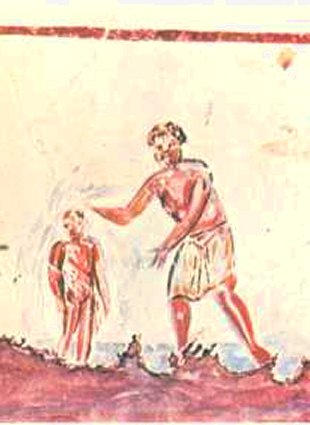|
|
|
|
|
|
|
' 'There cometh one mightier than I after me,
the latchet of whose shoes I am not worthy to stoop down and unloose. I
indeed have baptized you with water: but he shall baptize you with the
Holy Ghost. Let's put this aside and focus on the iconography of images of the baptism, one of the earliest subjects in Christian art. Below are some of the oldest images, dating from the second and third century. The first two are from the catacombs in Rome; the second two from early Christian sarcophagi. It is clear from the gospel texts that Christ was an adult when baptised. So why do these images show children? |
|
|
|
|
 Santa Maria Antigua, Rome, c 270.
|
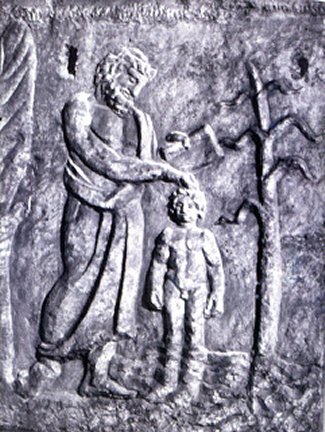 Museo Nazionale delle Terme, Rome |
|
The answer is that these images are not
intended as representations of the historical event, but are symbols of
the sacrament of baptism. Baptism was seen as a rebirth, and the nude
children represent that. Nudity also referred to the pre-lapsarian
Adam and Eve. John's hand does not appear to be pouring
water over Christ's head - baptism was a matter of total immersion.
Rather, it repesents annointing, or the laying on of hands. Let's move on a couple of centuries and visit the wonderful town of Ravenna, and its famous baptisteries. |
|
 |
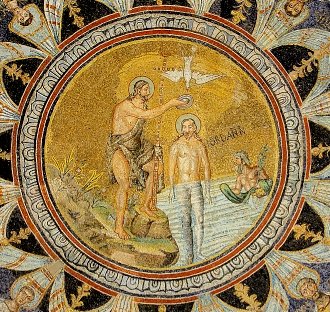 |
|
Above left is the
central mosaic from the Arian Baptistery in Ravenna. Above right is the
mosaic from the Neonian or Orthodox Baptistery across town. Although the
Neonian Baptistery is earlier - it was built at the end of the fourth
century - the mosaics in both date from the end of the fifth and the beginning
of the sixth century. The difference in the portrayal of Christ is striking. In the Arian baptistery Christ is shown as a naked boy, perhaps a little older than the images in the catacombs or on the sarcophagi. In the Neonian baptistery Christ is a bearded adult. It can be argued - though not very convincingly - that the Arian version was drawn from Arian theology, that claimed that Christ was not equal to God and was created after Him. But would the image truly suggest that? I would suggest that the mosaics simply draw on earlier material for inspiration; those sarcophagi for the Arian baptistery (there are are plenty of sarcophagi in Ravenna) and the depiction of pagan gods in the Neonian baptistery. Curiously, both images have a pagan reference: the other figure is the personification of the River Jordan, effectively a river god. Now for some later versions. An important element of many of these is the depiction of the Trinity. |
|
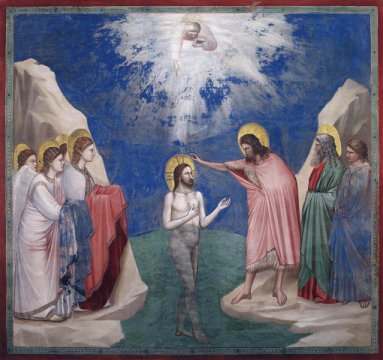 Giotto: Scrovegni Chapel, Padua. |
 Mosaic, Basilica of San Marco, Venice, c1350 |
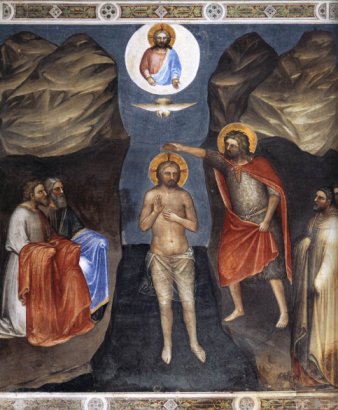 Giusto de Menabuoi: Baptistery, Padua |
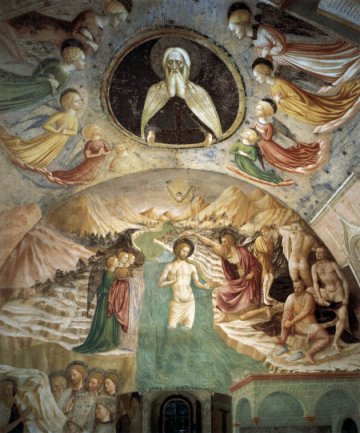 Masolino da Panicale: Baptistery, Castiglione Olona
|
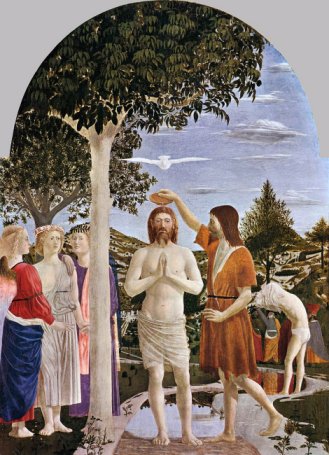 Piero della Francesca: National Gallery, London |
 El Greco: Galleria Estense, Modena |
